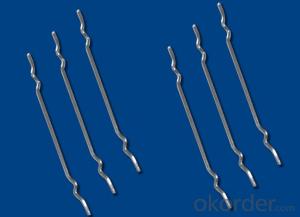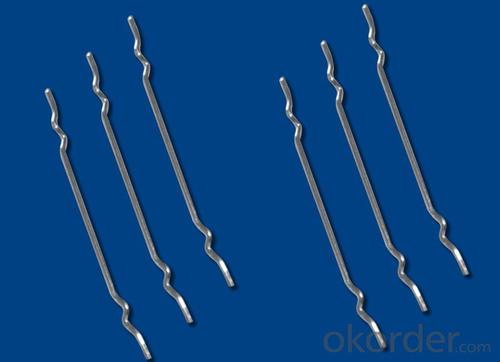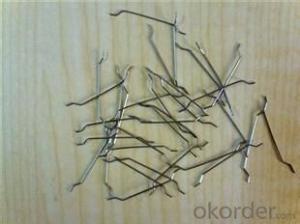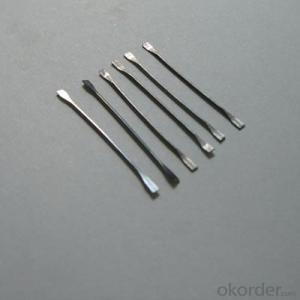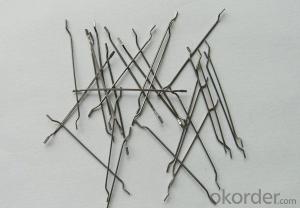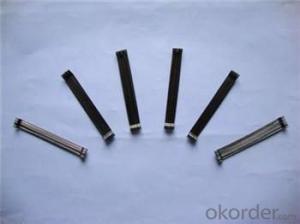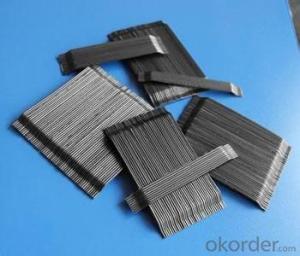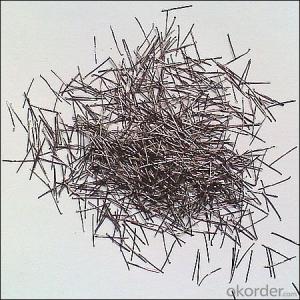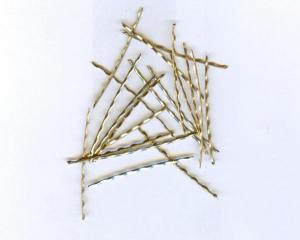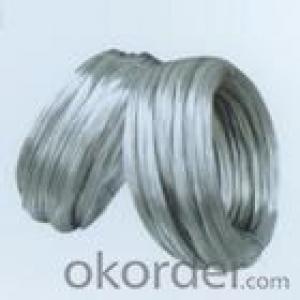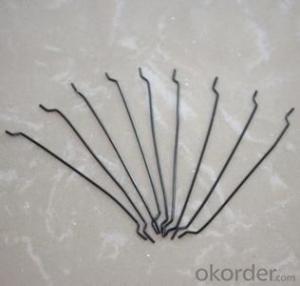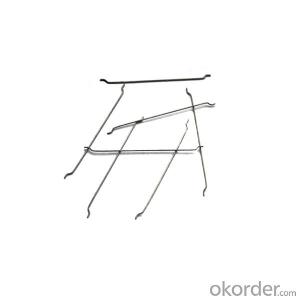Melt Extract Stainless Steel Fiber Glued for Construction and Concrete
- Loading Port:
- Tianjin
- Payment Terms:
- TT OR LC
- Min Order Qty:
- 5 kg
- Supply Capability:
- 250000 kg/month
OKorder Service Pledge
OKorder Financial Service
You Might Also Like
Quick Details
Place of Origin: Shandong, China (Mainland), Shandong, China (Mainland)
Model Number: GLUED, glued steel fiber
Material: Steel
type: steel fiber for concrete reinforcement
material: steel wire
shape: glued together in a row
appearance: clear and bright
Product features
glued steel fiber together in a row ,is used with cement for construction concrete steel fiber is specifically to enhance concrete in its hardened state ,the uniform distribution of steel fiber throughout the concrete greatly improve concrete bonding and tensile strength ,additionally it provides exceptional load stability and durability ,as reliable and efficient concrete reinforcement material
it is widely ued in buildings ,bridges ,thin roo engineering ,highway etc.
Specifications
Glued Steel fiber for Concrete Reinforcement
1.High tensile strength
2.Length 6-60mm
3.Diameter 0.2-1.0mm
4.ISO9001, CE, TUV
Specification | Diameter (mm) | Length (mm) | Aspect ratio (L/D) | Tensile strength (Mpa) |
0.12/6 | 0.12 | 6 | 50 | 2500 |
0.2/6 | 0.2 | 6 | 30 | 2500 |
0.2/13 | 0.2 | 13 | 65 | 2500 |
0.3/25 | 0.3 | 25 | 83 | 2500 |
0.4/25 | 0.4 | 25 | 63 | 1200 |
0.4/30 | 0.4 | 30 | 75 | 1200 |
0.5/30 | 0.5 | 30 | 60 | 1100 |
0.5/25 | 0.5 | 25 | 50 | 1100 |
0.55/25 | 0.55 | 25 | 45 | 800 or 1000 |
0.6/30 | 0.6 | 30 | 50 | 1000 or 1100 |
0.7/30 | 0.7 | 30 | 43 | 1000 |
0.7/35 | 0.7 | 35 | 50 | 1000 |
0.75/35 | 0.75 | 35 | 47 | 1000 |
0.75/60 | 0.75 | 60 | 80 | 1000 |
0.8/60 | 0.8 | 60 | 75 | 1000 |
0.9/50 | 0.9 | 50 | 56 | 1000 |
0.9/60 | 0.9 | 60 | 67 | 1000 |
1.0/50 | 1.0 | 50 | 50 | 1000 |
1.0/60 | 1.0 | 60 | 60 | 1000 |
Picture
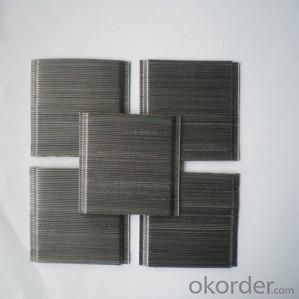
Adhesion into a row
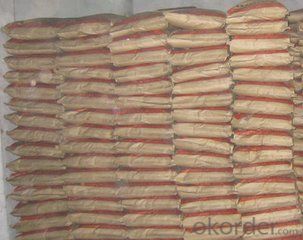
any type steel fiber
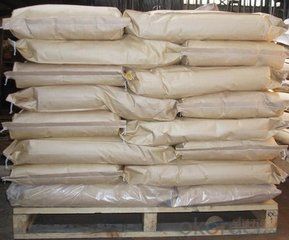
FAQ
we can produce any type steel fiber and of course we can make production according to your requirement
we have specilize in this field for almost 10 years ,with good quality and competitive price
Glued steel fiber for concrete reinforcement >1200Mpa
- Q: Can melt extract stainless steel fiber be used in high-rise building cladding?
- Yes, melt extract stainless steel fiber can be used in high-rise building cladding.
- Q: How does melt extract stainless steel fiber impact the workability of concrete?
- Melt extract stainless steel fiber has a significant impact on the workability of concrete. When added to concrete mixtures, these fibers enhance the overall workability and cohesiveness of the concrete mix, making it easier to handle and shape. One of the key benefits of using melt extract stainless steel fiber is its ability to improve the plasticity of the concrete. The fibers act as a reinforcement, distributing the load across the concrete mixture and reducing the risk of cracking and shrinkage. This results in a more workable and malleable concrete mix, allowing for better construction and finishing. Additionally, the addition of stainless steel fibers also enhances the overall strength and durability of the concrete. The fibers act as a reinforcement, providing additional tensile strength and preventing the formation of cracks. This not only improves the workability of the concrete but also increases its resistance to impact, vibrations, and other external forces. Moreover, melt extract stainless steel fibers improve the cohesion and cohesiveness of the concrete mix. These fibers create a three-dimensional network within the concrete, helping to hold the mixture together and reducing segregation and bleeding. This results in a more uniform and homogeneous concrete mix, making it easier to pour, spread, and finish. Overall, the addition of melt extract stainless steel fiber positively impacts the workability of concrete by improving its plasticity, strength, and cohesion. It enhances the overall handling and shaping characteristics of the concrete mix, resulting in better construction quality and improved durability.
- Q: What is the effect of melt extract stainless steel fiber on the plastic settlement of shotcrete?
- The impact of melt extract stainless steel fiber on the plastic settlement of shotcrete cannot be underestimated. The inclusion of these fibers in the shotcrete mixture not only enhances its overall performance but also mitigates the issue of plastic settlement. Shotcrete is widely utilized in construction due to its rapid and efficient application. Nevertheless, it is susceptible to plastic settlement, which occurs when the material sinks or settles before it solidifies. This settlement can lead to undesirable outcomes such as cracks, voids, and weakened strength in the shotcrete. To combat this problem, melt extract stainless steel fibers have been specifically developed. These fibers are incorporated into the shotcrete mix and uniformly disperse throughout the material during the application process. As the shotcrete settles, the stainless steel fibers act as a reinforcement, providing additional support and preventing excessive settlement. The introduction of stainless steel fibers significantly enhances the tensile strength of the shotcrete, thereby augmenting its resistance to cracking and deformation. These fibers establish a three-dimensional network within the material, bolstering its overall structural integrity. Consequently, the plastic settlement of shotcrete is substantially reduced, ensuring that it maintains its form and strength during the setting process. Moreover, melt extract stainless steel fibers also contribute to the durability and longevity of shotcrete. They serve as a preventive measure against the formation of shrinkage cracks and offer added protection against external factors such as temperature fluctuations, moisture, and chemical exposure. To sum up, the incorporation of melt extract stainless steel fibers into shotcrete yields a positive impact on its plastic settlement. These fibers fortify the material, diminish settlement, and enhance its overall performance, durability, and strength.
- Q: What is the effect of melt extract stainless steel fiber on the flexural toughness of concrete?
- The inclusion of melt extract stainless steel fiber in concrete has a significant effect on its flexural toughness. Stainless steel fibers are known for their high tensile strength and ductility, which helps in enhancing the flexural toughness of concrete. When stainless steel fibers are added to concrete, they act as reinforcement and provide additional strength to the material. These fibers are evenly distributed throughout the concrete matrix, creating a three-dimensional network that helps in resisting cracks and distributing the applied load more efficiently. The melt extract stainless steel fibers also improve the post-cracking behavior of concrete. When a load is applied, the fibers bridge the cracks that may form, effectively transferring the stress and preventing further propagation of cracks. This bridging effect enhances the ductility and energy absorption capacity of concrete, thereby increasing its flexural toughness. Studies have shown that the addition of melt extract stainless steel fibers can significantly increase the flexural toughness of concrete, leading to improved resistance against bending and impact forces. This is particularly beneficial in structural applications where concrete is subjected to dynamic loads or where enhanced durability and crack resistance are desired. Overall, the inclusion of melt extract stainless steel fiber in concrete positively affects its flexural toughness by providing reinforcement, improving post-cracking behavior, and enhancing its resistance to bending and impact forces.
- Q: Can melt extract stainless steel fiber be used in earthquake-resistant concrete structures?
- Certainly, earthquake-resistant concrete structures can utilize melt extract stainless steel fiber. Renowned for their exceptional ductility and high tensile strength, stainless steel fibers are an ideal choice for bolstering the toughness and durability of concrete. The inclusion of these fibers in concrete enhances its ability to withstand cracking, shrinkage, and spalling during seismic events. The utilization of stainless steel fibers in earthquake-resistant concrete structures plays a crucial role in mitigating the adverse effects of earthquakes. Acting as reinforcement, these fibers augment the concrete's strength and hinder the propagation of cracks. This reinforcement fortifies the overall structural integrity of the concrete, rendering it more resistant to the dynamic forces unleashed by earthquakes. Furthermore, melt extract stainless steel fibers possess a high melting point, corrosion resistance, and exceptional thermal stability. These attributes render them suitable for long-term implementation in hostile environments, such as earthquake-prone regions. These fibers remain intact over time, ensuring the concrete structure's long-lasting durability and efficacy. Additionally, melt extract stainless steel fibers have undergone rigorous testing and have been proven to enhance the seismic performance of concrete structures. They conform to various international standards, such as ASTM and ACI, guaranteeing their quality and reliability. These fibers have successfully been employed in a diverse array of earthquake-resistant applications, including bridges, tunnels, high-rise buildings, and industrial structures. In conclusion, melt extract stainless steel fiber can indeed be employed in earthquake-resistant concrete structures. Its exceptional tensile strength, ductility, and resistance to cracking make it an outstanding reinforcement material for fortifying the durability and seismic performance of concrete. By incorporating stainless steel fibers into concrete, engineers can effectively bolster the resistance of structures to seismic forces, ensuring the safety and longevity of infrastructure in earthquake-prone regions.
- Q: What is the effect of melt extract stainless steel fiber on the drying shrinkage of shotcrete?
- The use of melt extract stainless steel fiber in shotcrete reduces the drying shrinkage. This is because the fibers help to enhance the tensile strength and reduce the cracking potential in the shotcrete, leading to decreased shrinkage during the drying process.
- Q: What are the advantages of using melt extract stainless steel fiber?
- There are numerous benefits to utilizing melt extract stainless steel fiber in a variety of applications. To begin with, melt extract stainless steel fiber boasts exceptional strength and durability. Crafted from stainless steel, renowned for its high tensile strength and resistance to corrosion, the fibers are well-suited for use in demanding environments where alternative materials may falter. Furthermore, the utilization of melt extract stainless steel fiber can notably enhance the mechanical properties of a material. When introduced to concrete or other composites, the fibers serve as reinforcement, enhancing toughness, ductility, and crack resistance. As a result, structures become more resilient and long-lasting. In addition, melt extract stainless steel fiber exhibits excellent thermal properties. With a high melting point, it can withstand extreme temperatures without deformation or compromising its structural integrity. Consequently, it is an ideal choice for applications involving high heat or fire hazards. Moreover, melt extract stainless steel fiber offers electromagnetic shielding capabilities. Its conductive nature effectively blocks electromagnetic waves, preventing interference and safeguarding sensitive electronic equipment. This renders it suitable for industries such as aerospace, telecommunications, and electronics. Furthermore, the utilization of melt extract stainless steel fiber can also yield long-term cost savings. By reinforcing materials and structures, it prolongs their lifespan and diminishes the necessity for frequent repairs or replacements. Over time, this can result in substantial cost savings. In conclusion, the advantages of melt extract stainless steel fiber encompass exceptional strength and durability, enhanced mechanical properties, impressive thermal properties, electromagnetic shielding capabilities, and potential cost savings. These qualities establish it as a versatile and dependable choice for various applications across diverse industries.
- Q: Can melt extract stainless steel fiber be used in marine construction?
- Yes, melt extract stainless steel fiber can be used in marine construction. Stainless steel is highly resistant to corrosion, which makes it a suitable material for marine environments where exposure to saltwater, moisture, and other corrosive elements is high. The melt extract stainless steel fiber can be incorporated into concrete or other building materials used in marine construction to enhance their strength, durability, and resistance to corrosion. This can help increase the lifespan of structures in marine environments and reduce the need for frequent maintenance and repair. Additionally, the use of stainless steel fiber in marine construction can also improve the overall structural integrity and performance of the built environment in these challenging conditions.
- Q: What is the effect of melt extract stainless steel fiber on the post-cracking behavior of concrete?
- The addition of melt extract stainless steel fibers to concrete can significantly improve its post-cracking behavior. These fibers act as reinforcement, enhancing the ductility and toughness of the concrete. They help to distribute the stresses more evenly throughout the material, reducing the initiation and propagation of cracks. This ultimately leads to improved crack control and increased resistance to cracking under various loading conditions.
- Q: How does melt extract stainless steel fiber improve the bond strength of concrete?
- Melt extract stainless steel fiber is known for its ability to significantly improve the bond strength of concrete. The unique properties of this fiber contribute to its effectiveness in enhancing the bond between the concrete matrix and the reinforcement. Firstly, the melt extract stainless steel fiber has a high aspect ratio, meaning it has a long and slender shape. This characteristic allows the fiber to penetrate deeply into the concrete matrix, resulting in a larger surface area for bond formation. As a result, the bond strength is improved as the fiber forms a strong interlocking network within the concrete. Secondly, the stainless steel fiber is manufactured using a melt extraction process, which ensures a clean and uniform composition. This uniformity and absence of impurities contribute to a better bond with the concrete matrix. The smooth surface of the fiber also prevents any weak points or irregularities that could weaken the bond strength. Additionally, the stainless steel material itself possesses high tensile strength and excellent corrosion resistance. These properties allow the fiber to withstand the forces and environmental conditions that may degrade the bond strength of traditional reinforcement, such as corrosion or chemical attack. Therefore, the use of melt extract stainless steel fiber in concrete significantly improves the durability and long-term performance of the structure. In summary, melt extract stainless steel fiber improves the bond strength of concrete by providing a high aspect ratio for better penetration, uniform composition for a consistent bond, and strong material properties to withstand external forces. This fiber reinforcement enhances the overall strength and durability of the concrete structure, making it an excellent choice for various construction applications.
Send your message to us
Melt Extract Stainless Steel Fiber Glued for Construction and Concrete
- Loading Port:
- Tianjin
- Payment Terms:
- TT OR LC
- Min Order Qty:
- 5 kg
- Supply Capability:
- 250000 kg/month
OKorder Service Pledge
OKorder Financial Service
Similar products
Hot products
Hot Searches
Related keywords
